
Dr. Jekyll and Mr. Hyde is a 1931 American pre-Code horror film, directed by Rouben Mamoulian and starring Fredric March, who plays a possessed doctor who tests his new formula that can unleash people's inner demons. The film is an adaptation of The Strange Case of Dr. Jekyll and Mr. Hyde, the 1886 Robert Louis Stevenson tale of a man who takes a potion which turns him from a mild-mannered man of science into a homicidal maniac.

The Big Store is a 1941 American comedy film directed by Charles Reisner and starring the Marx Brothers that takes place in a large department store. Groucho appears as private detective Wolf J. Flywheel.

The Little Princess is a 1939 American drama film directed by Walter Lang. The screenplay by Ethel Hill and Walter Ferris is loosely based on the 1905 novel A Little Princess by Frances Hodgson Burnett. The film was the first Shirley Temple movie to be filmed completely in Technicolor. It was also her last major success as a child star. This film was the third of three in which Shirley Temple and Cesar Romero appeared together, second was Wee Willie Winkie (1937) and Ali Baba Goes to Town (1937).

Death Takes a Holiday is a 1934 American pre-Code romantic drama starring Fredric March, Evelyn Venable and Guy Standing. It is based on the 1924 Italian play La morte in vacanza by Alberto Casella (1891–1957), as adapted in English for Broadway in 1929 by Walter Ferris.

Stand Up and Cheer! is a 1934 American Pre-Code musical film directed by Hamilton MacFadden. The screenplay by Lew Brown and Ralph Spence was based upon a story idea by Will Rogers and Philip Klein. The film is about efforts undertaken during the Great Depression to boost the morale of the country. It is essentially a vehicle for a string of vaudeville acts and a few musical numbers. The film is best known for providing the first big breakthrough role for legendary child actress Shirley Temple. A little known bit player before the film, by the end of the year, she appeared in 10 movies, including 4 starring roles in major feature-length films.
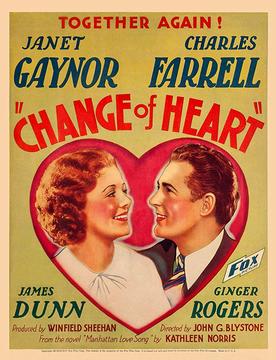
Change of Heart is a 1934 American pre-Code drama film starring Janet Gaynor, Charles Farrell, James Dunn, and Ginger Rogers. The movie, about a quartet of college chums who all move to 1934 New York City, was written by James Gleason and Sonya Levien from Kathleen Norris's novel, Manhattan Love Song and directed by John G. Blystone.

Heidi is a 1937 American musical drama film directed by Allan Dwan and written by Julien Josephson and Walter Ferris, loosely based on Johanna Spyri's 1880 children's book of the same name. The film stars Shirley Temple as the titular orphan, who is taken from her grandfather to live as a companion to Klara, a spoiled, disabled girl. It was a success and Temple enjoyed her third consecutive year as number one box office draw.

Kitty Foyle, subtitled The Natural History of a Woman, is a 1940 drama film starring Ginger Rogers, Dennis Morgan, and James Craig, based on Christopher Morley's 1939 bestseller Kitty Foyle. Rogers won the Academy Award for Best Actress for her portrayal of the title character, and the dress she wore in the film became known as a Kitty Foyle dress.
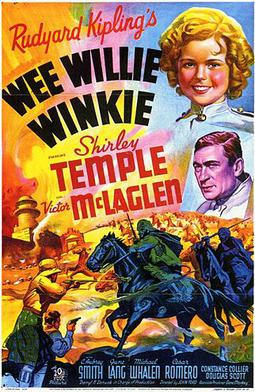
Wee Willie Winkie is a 1937 American adventure drama film directed by John Ford and starring Shirley Temple, Victor McLaglen, and Cesar Romero. The screenplay by Julien Josephson and Ernest Pascal was based on a story by Rudyard Kipling. The film's story concerns the British presence in 19th-century India. The production was filmed largely at the Iverson Movie Ranch in Chatsworth, California, where a number of elaborate sets were built for the film. This film was the first of three in which Shirley Temple and Cesar Romero appeared together, second was Ali Baba Goes to Town (1937) and The Little Princess (1939).
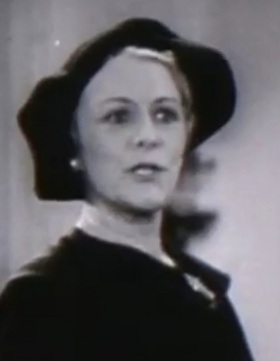
Nella Walker was an American actress and vaudeville performer of the 1920s through the 1950s.

Journey for Margaret is a 1942 American drama film set in London in World War II. It stars Robert Young and Laraine Day as a couple who have to confront the loss of their unborn child due to a bombing raid. It is an adaptation of the book of the same name in which William Lindsay White and his wife described their experiences adopting an orphan in London. This is reflected in the introduction to the film, which begins: “The Margaret of this story is real... “ This was the final film of the prolific director W. S. Van Dyke.

Mad About Music is a 1938 American musical film directed by Norman Taurog and starring Deanna Durbin, Herbert Marshall, and Gail Patrick. Based on a story by Marcella Burke and Frederick Kohner, the film is about a girl at an exclusive boarding school who invents an exciting father. When her schoolmates doubt his existence, she has to produce him. Mad About Music received Academy Award nominations for Best Art Direction, Best Cinematography, Best Music, and Best Original Story.

Footsteps in the Dark is a 1941 American comedy mystery film directed by Lloyd Bacon and starring Errol Flynn, Brenda Marshall and Ralph Bellamy. It was produced and distributed by Warner Brothers. Flynn plays a novelist and amateur detective investigating a murder. It takes its title from the 1935 play Footsteps in the Dark by Ladislas Fodor and also used material from the 1937 play Blondie White by Jeffrey Dell.
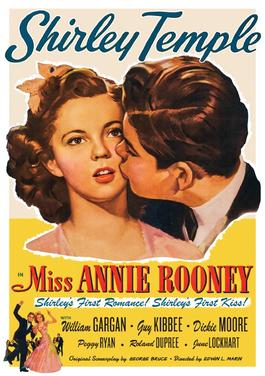
Miss Annie Rooney is a 1942 American drama film directed by Edwin L. Marin. The screenplay by George Bruce has some similarities to the silent film, Little Annie Rooney starring Mary Pickford, but otherwise, the films are unrelated. Miss Annie Rooney is about a teenager from a humble background who falls in love with a rich high school boy. She is snubbed by his social set, but, when her father invents a better rubber synthetic substitute, her prestige rises. Notable as the film in which Shirley Temple received her first on-screen kiss, and Moore said it was his first kiss ever. The film was panned.
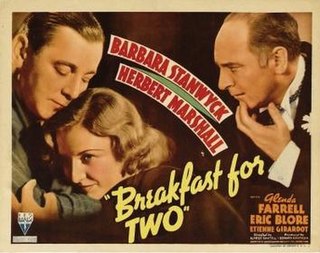
Breakfast for Two is a 1937 American screwball comedy film directed by Alfred Santell and starring Barbara Stanwyck, Herbert Marshall and Glenda Farrell. The film was produced and distributed by RKO Pictures, but was a commercial failure for the studio. Stanwyck and Marshall worked together once more, immediately following this film, on the 20th Century-Fox drama Always Goodbye (1938).
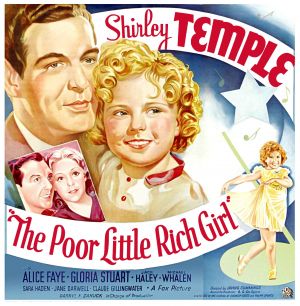
Poor Little Rich Girl, advertised as The Poor Little Rich Girl, is a 1936 American musical film directed by Irving Cummings and starring Shirley Temple, Alice Faye and Jack Haley. The screenplay by Sam Hellman, Gladys Lehman, and Harry Tugend was based on stories by Eleanor Gates and Ralph Spence, and the 1917 Mary Pickford vehicle of the same name. The film focuses on a child (Temple) neglected by her rich and busy father. She meets two vaudeville performers and becomes a radio singing star. The film received a lukewarm critical reception from The New York Times.
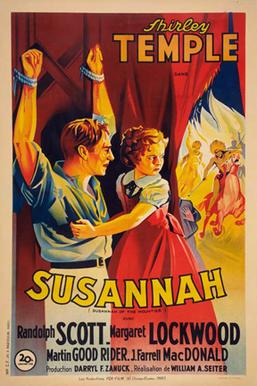
Susannah of the Mounties is a 1939 American Western film directed by William A. Seiter and starring Shirley Temple, Randolph Scott, and Margaret Lockwood. Based on the 1936 novel Susannah of the Mounties by Muriel Denison, the film is about an orphaned survivor of an Indian attack in the Canadian West who is taken in by a Mountie and his girlfriend. Following additional Indian attacks, the Mountie is saved from the stake by the young girl's intervention with the Indian chief.
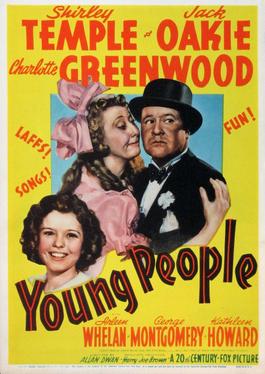
Young People is a 1940 American musical drama film directed by Allan Dwan and starring Shirley Temple and Jack Oakie. This would be Shirley's final film as a child actress.
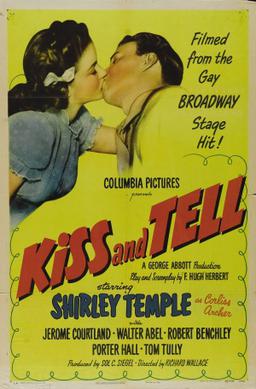
Kiss and Tell is a 1945 American comedy film starring then 17-year-old Shirley Temple as Corliss Archer. In the film, two teenage girls cause their respective parents much concern when they start to become interested in boys. The parents' bickering about which girl is the worse influence causes more problems than it solves.
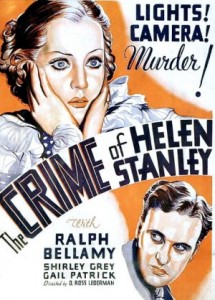
The Crime of Helen Stanley is a 1934 American pre-Code crime film directed by D. Ross Lederman and starring Ralph Bellamy, Shirley Grey and Gail Patrick. The film is also known as Murder in the Studio. It was the third in a series of four films featuring Bellamy as Inspector Trent of the NYPD following on from Before Midnight and One Is Guilty. The final film Girl in Danger in the sequence was released later in the year.




















